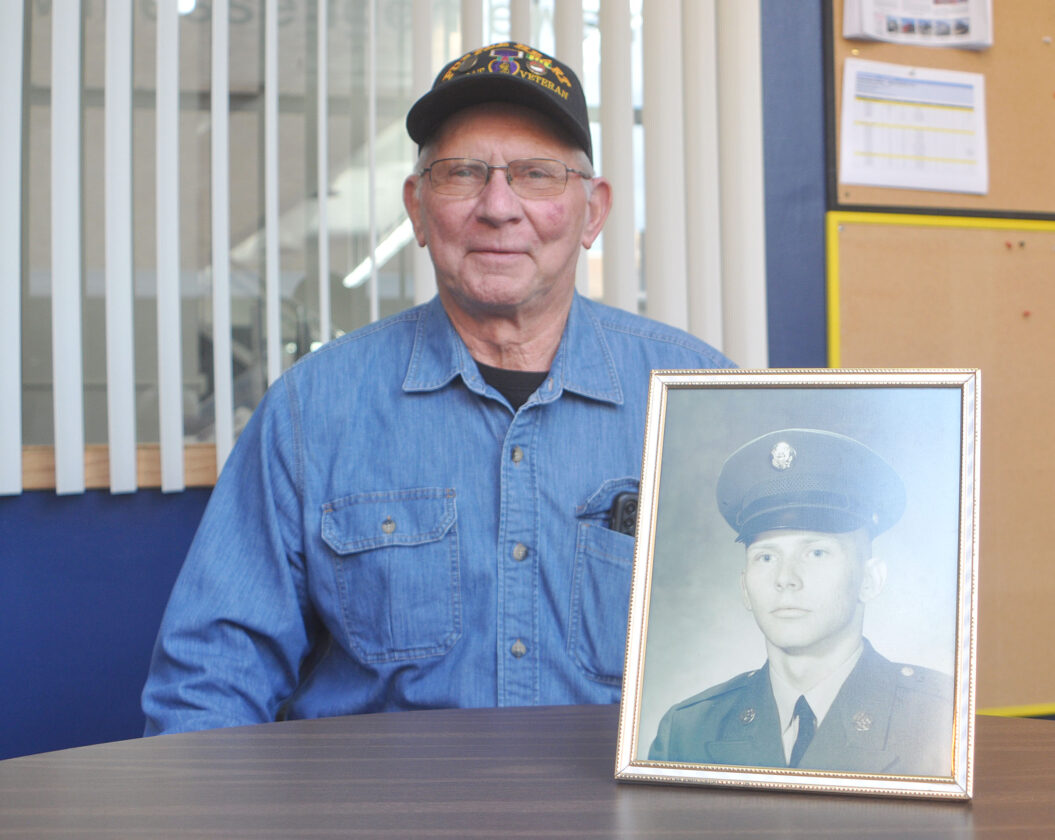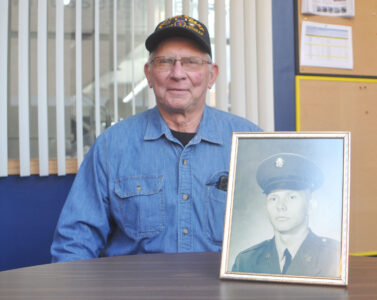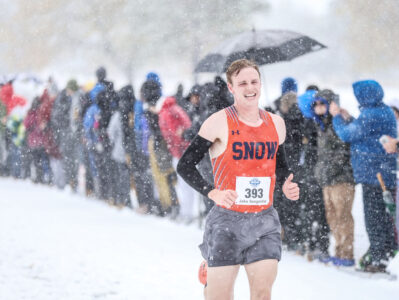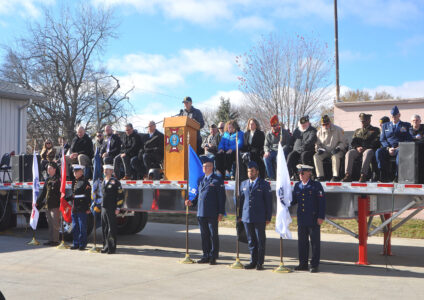Haakenson received Purple Heart
Fort Dodge man hacked his way through the jungles of Vietnam
-
-Messenger photo by Bill Shea
Steve Haakenson, of Fort Dodge, poses with a photo of himself taken when he graduated from Army boot camp in 1970.

-Messenger photo by Bill Shea
Steve Haakenson, of Fort Dodge, poses with a photo of himself taken when he graduated from Army boot camp in 1970.
During his time in South Vietnam, Steve Haakenson jumped out of helicopters and inched through tunnels in pursuit of an elusive enemy.
He carried up to 150 pounds of gear as he and his fellow Army soldiers slogged through jungles.
And he survived a massive explosion that inflicted wounds that can still bother him today.
Haakenson lives in Fort Dodge now, but he grew up in Dawson, Minnesota. He graduated from high school there, and in 1970, was drafted into the United States Army.
His first stop was basic training at Fort Lewis, Washington.
“It was strict, real strict,” he said of boot camp. “From early morning to late at night, you were always doing something.”
After about eight weeks of basic training, he moved on to advanced infantry training at that same fort. That training, he recalled, was all about learning to use different kinds of weapons. It also was not as rigorous as basic training. For example, he said during advanced training the soldiers could go to a snack bar, something that was impossible in basic training.
After about eight weeks of that training, Haakenson had two weeks of leave back home before going to South Vietnam in April 1970. He flew from California to Japan to South Vietnam.
In South Vietnam, he was assigned to the 1st Cavalry Division. The troops in that unit flew out into the countryside aboard UH-1 Iroquois helicopters they called Hueys.
He was given a grenade launcher, which he said was perhaps the only weapon he didn’t train with at Fort Lewis. The second day his unit was out in the field, the troops got into a battle and he swapped his grenade launcher for another soldier’s M-16 rifle, which he used for the rest of his time in South Vietnam.
But the rifle was far from the only thing he carried. Haakenson lugged several canteens of water, about 300 rounds of ammunition for the unit’s machine gun and, eventually, he had a large radio strapped to his back.
Haakenson said when he became a radio operator he was given a security clearance, but no one told him that until his Army service was almost over.
He recalled that the soldiers literally had to hack their way through jungles many times.
In the field, they ate canned food that they heated up by breaking off small pieces of C4 plastic explosives and lighting them on fire. The C4, he said, would not explode unless a detonator was put into it. But the explosive would produce a flame that a soldier could heat a can of food over, he said.
The monsoon season created unique problems for the soldiers. Haakenson recalled once while out in the field, he slept on a hillside with his head uphill and his feet downhill. He woke up with water up to his waist as the result of a monsoon downpour. The monsoons, he said, caused flash floods. He knows of at least one soldier who was swept away and drowned in a monsoon flood.
Seeing legendary comedian Bob Hope was the highlight of Haakenson’s tour in Vietnam. He said the soldiers in his unit drew numbers to see who would get to see Hope. He was one of the lucky ones.
He no longer remembers where he saw Hope, but he does recall that it took a long ride of a couple hours in an Army truck to get to the show.
The soldiers from his outfit ended up at the back of the large audience.
“We were way, way back,” he said.
Hope, he said, “did a good performance for the service people.”
“He was basically on stage the whole time we were there,” he added.
The explosion that wounded him happened in January 1971 near the border of South Vietnam and Cambodia.
The soldiers found an enemy bunker and threw a grenade into it. When the grenade exploded, it detonated a large amount of explosives in the bunker, causing a blast that was heard and felt miles away.
Haakenson was hit by shrapnel in the neck, abdomen and wrist. He was taken by helicopter to a base camp hospital in South Vietnam. After treatment there, he was among other wounded soldiers loaded into a C-141 cargo plane and flown to a naval hospital in Guam.
Eventually, he returned to the United States and worked briefly as a driver at Fort Hood, Texas.
He was discharged from the Army in September 1971 with the Purple Heart, Bronze Star and Combat Infantryman Badge. He is now retired after a 35-year career with AGP.





